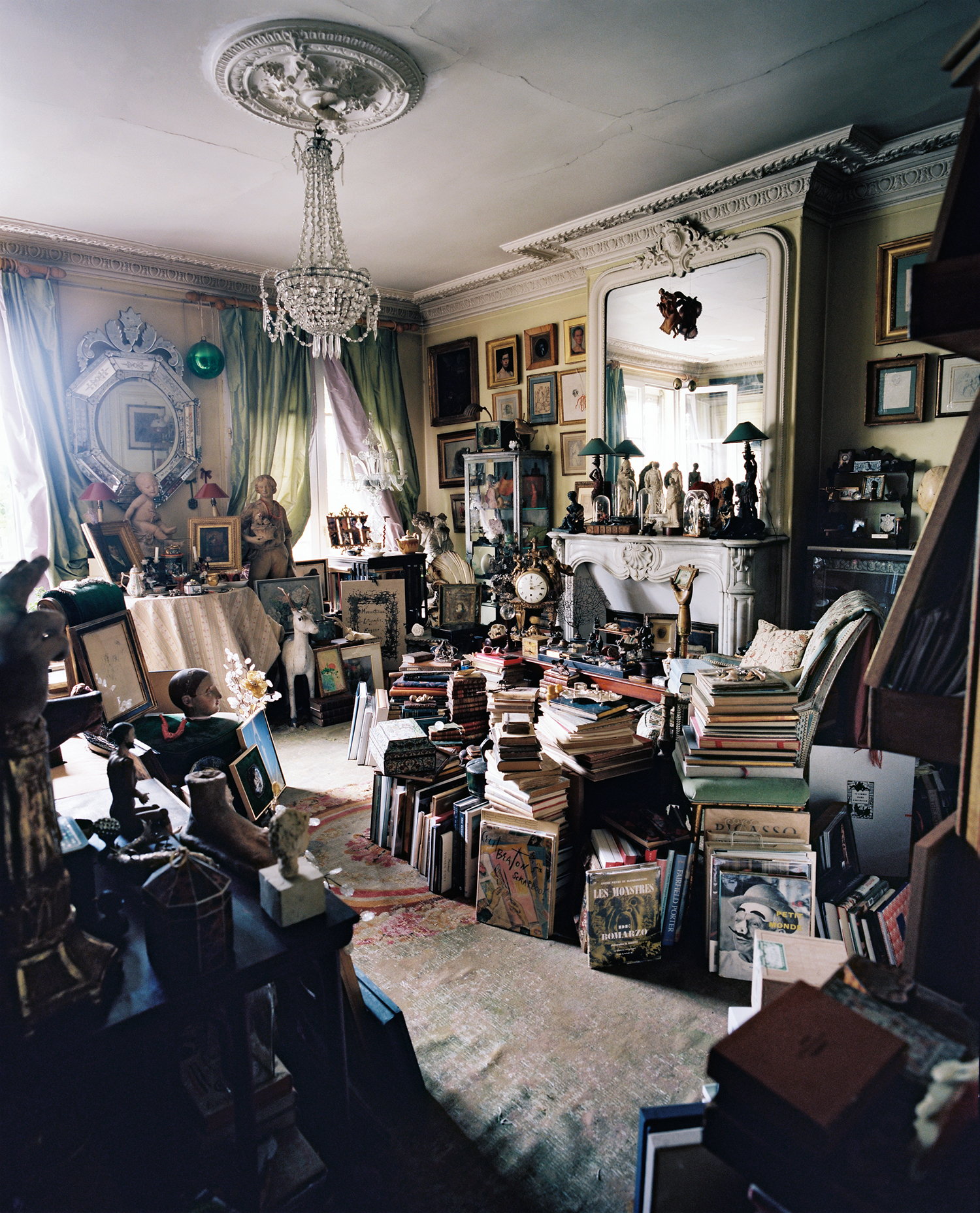Purple Magazine
— F/W 2014 issue 22
Patrick Mauriès
The French writer, aesthete, and Purple contributor PATRICK MAURIÈS secretly collects books and decorative objects. For the first time, he opens THE DOOR TO HIS PARISIAN APARTMENT, which is filled to the brim with rare finds from his flâneries and reflects his sophisticated curiosity and exceptional taste.
photography by GIASCO BERTOLI
text by PATRICK MAURIÈS
 A view of the living room with the books du jour
A view of the living room with the books du jour
 French books to the left, Italian in the back, and English to the right
French books to the left, Italian in the back, and English to the right
 A little iron staircase overlooks the “meditation room,” which was added to the apartment a few years ago
A little iron staircase overlooks the “meditation room,” which was added to the apartment a few years ago
Here is a prime paradox for our time: between posting “selfies” and sharing stuff on Facebook and similar sites, we’re spending a lot of time filling the digital ether with images of ourselves, but we don’t think…
-

Above and on the living room sofa are stuffed birds, Line Vautrin mirrors, a Janine Janet deer head (for Jean Marais), painting by Eugène Berman, and a reliquary hand from the 17th century
-

Above and on the living room sofa are stuffed birds, Line Vautrin mirrors, a Janine Janet deer head (for Jean Marais), painting by Eugène Berman, and a reliquary hand from the 17th century
-

On a chair, having belonged to Bérard and reupholstered in velour by Christian Dior, is the head of a 1930s mannequin, a drawing by Leonor Fini, and a napolitain santon
-

In a corner of the room, a François-Xavier Lalanne monkey, a stained glass window from an old villa in Nice, drawings by Edward Gorey and a terra cotta sphinx